No matter how good the EIFS sealant joints are, if the windows leak, there will be problems with the windows rotting out and the home's framing becoming damaged. This could also lead to other deterioration problems, such as mold or fungus.
An active mold that is not treated on the inside of the window cavity could cause major damage in the future. Moisture is the only ingredient required to reactivate dormant mold spores.
It has been shown that the problem exists on most EIFS homes. It is often overlooked by retrofit contractors. In searching for a cure for windows that rot out in a short period of time, I have come to realize some facts as being constant:
1. Wood windows--both double-hung and casement--leak.
2. Most windows installed in residential dwellings are not back primed or flashed as per manufacturers' details.
3. The problem of rot to the windows or framing does not show for several years.
4. The problems are quicker to show in EIFS homes due to the fact that the moisture that does get through the window is held in the cavity longer than other wall systems that have ventilation and a drain plane.
5. Repairing the EIFS and its sealant joints will not stop window rot.
In order to treat the problems that cause rot, one must:
* Stop the leak.
* Add ventilation to the cavity.
* Eradicate the existing mold spores.
The accompanying photographs demonstrate the damage leaky windows caused on a four-year-old home.

Photo 1
This well-kept EIFS home was constructed approximately four years ago. It was retrofitted in the last 18 months. The retrofit contractor holds several certifications for product knowledge and is a certified EIFS inspector. The contractor has a reputation for being one of the best retro-fit contractors in the area and is active in a national organization to promote good EIFS installations.On inspection of this home, we found the EIFS details to be up to standard in every aspect with the exception of metal head flashing over the windows and doors.
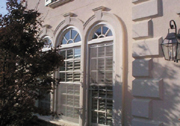
Photo 2
Notice a triple-ganged set of double-hung windows on the front elevation of this home. If one could inspect these windows, one would observe no metal head flash, but the overhang of the EIFS trim offers protection to the headers. There are also good working EIFS-to-wood sealant joints and inspection of the window unit itself reveals no problems. At the owner's request, we were asked to look at the interior of the room behind these windows.
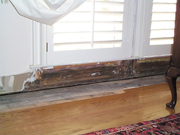
Photo 3
The complaint of the owner becomes obvious. He had discovered that his hardwood floor under the windows had rotted away. Once he discovered the problem, he removed the baseboard under the windows and found additional water damage beginning to take place in the framing. Notice the growth of mold in the framing.
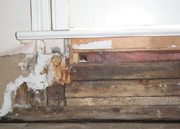
Photo 4
After a close inspection of the windows, even though there was no indication from the exterior of the home, it was suggested that a water test be performed on the windowsill jamb connection. The test was performed by constructing dams of plumber's putty at the perimeter of the sill and jamb intersections as shown. The test proved major leakage almost immediately.
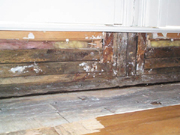
Photo 5
Close observation shows that the water entered through every corner miter joint and migrated from the source to the interior of the framing. Damage has started in the framing but had already destroyed the hardwood floor and the wood underlayment.
Photo 6
In order to preserve the home's framing, it is essential to stop the flow of water into the wall cavity. The EIFS industry has made a valid effort to correct many of the major installation problems. However, until the problem of the windows is addressed, the homeowner and the EIFS industry will continue to suffer losses.
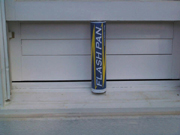
Photo 7
Cavity ventilation and a drain pan can be added with the installation of the flash pan. As this work is taking place, a mold spore inhibitor should be used as directed. Treat the cavity and open wood framing with a mold spore inhibitor.Yearly maintenance should be performed to the flash-pan system. Inspect all wood-to-wood joints and repair any cracks to the caulk and paint. Spray the cavity with a mold spore inhibitor through the vent tube.
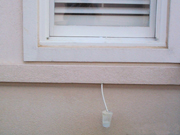
Photo 8
Here, the flash pan material being drained into the cavity under a window. The material is then allowed to drain off into a waste cup. When complete, the cavity is ventilated and treated. The drain tube is shortened and an insect screen cap is installed.While doing the annual inspection, the insect screen cap is removed and the area is re-treated with a spore block. A natural plane is created under the window and ventilation, and a means of future treatment is provided.

Report Abusive Comment